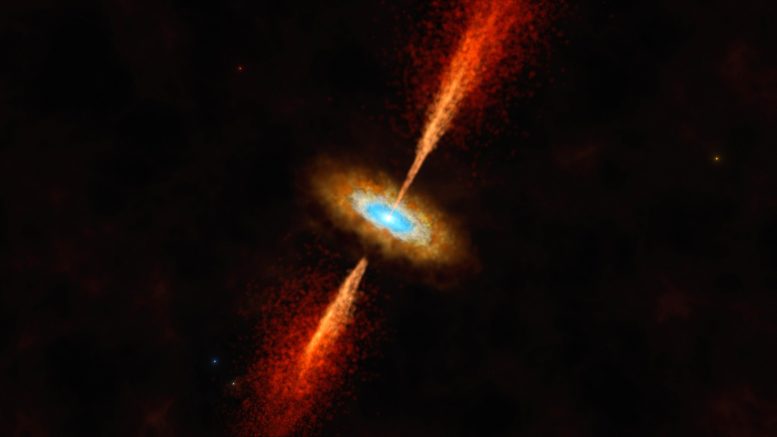
This artist’s impression shows the HH 1177 system, which is located in the Large Magellanic Cloud, a neighboring galaxy of our own. The young and massive stellar object glowing in the center is collecting matter from a dusty disc while also expelling matter in powerful jets. This is the first time a disc around a young star — the type of disc identical to those forming planets in our own galaxy — has been discovered in another galaxy. Credit: ESO/M. Kornmesser
Using the ALMA telescope, astronomers have detected a disc forming around a young star in the Large Magellanic Cloud, marking the first discovery of its kind outside our galaxy.
In a remarkable discovery, astronomers have found a disc around a young star in the Large Magellanic Cloud, a galaxy neighboring ours. It’s the first time such a disc, identical to those forming planets in our own Milky Way, has ever been found outside our galaxy. The new observations reveal a massive young star, growing and accreting matter from its surroundings and forming a rotating disc. The detection was made using the Atacama Large Millimeter/submillimeter Array (ALMA) in Chile, in which the European Southern Observatory (ESO) is a partner.
Using ALMA, astronomers have for the first time found a disc around a young star outside our own galaxy. This video summarizes the discovery. Credit: ESO
First Extragalactic Accretion Disc Detected
“When I first saw evidence for a rotating structure in the ALMA data I could not believe that we had detected the first extragalactic accretion disc, it was a special moment,” says Anna McLeod, an associate professor at Durham University in the UK and lead author of the study published today (November 29) in the journal Nature. “We know discs are vital to forming stars and planets in our galaxy, and here, for the first time, we’re seeing direct evidence for this in another galaxy.”
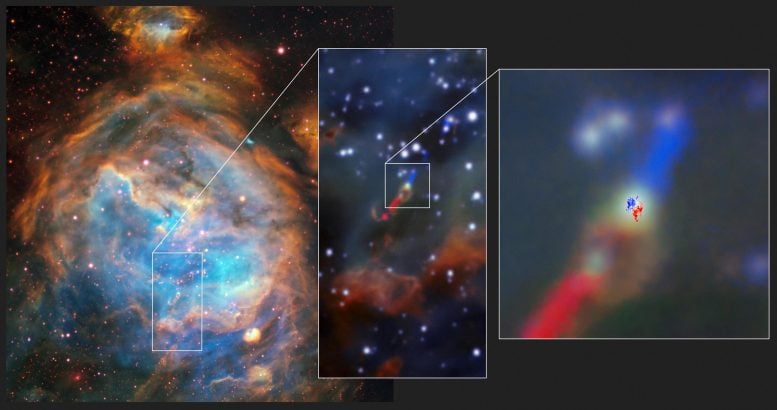
With the combined capabilities of ESO’s Very Large Telescope (VLT) and the Atacama Large Millimeter/submillimeter Array (ALMA), a disc around a young massive star in another galaxy has been observed. Observations from the Multi Unit Spectroscopic Explorer (MUSE) on the VLT, left, show the parent cloud LHA 120-N 180B in which this system, dubbed HH 1177, was first observed. The image at the center shows the jets that accompany it. The top part of the jet is aimed slightly towards us and thus blueshifted; the bottom one is receding from us and thus redshifted. Observations from ALMA, right, then revealed the rotating disc around the star, similarly with sides moving towards and away from us. Credit: ESO/ALMA (ESO/NAOJ/NRAO)/A. McLeod et al.
Connecting Observations and Confirming Theories
This study follows up observations with the Multi Unit Spectroscopic Explorer (MUSE) instrument on ESO’s Very Large Telescope (VLT), which spotted a jet from a forming star — the system was named HH 1177 — deep inside a gas cloud in the Large Magellanic Cloud. “We discovered a jet being launched from this young massive star, and its presence is a signpost for ongoing disc accretion,” McLeod says. But to confirm that such a disc was indeed present, the team needed to measure the movement of the dense gas around the star.
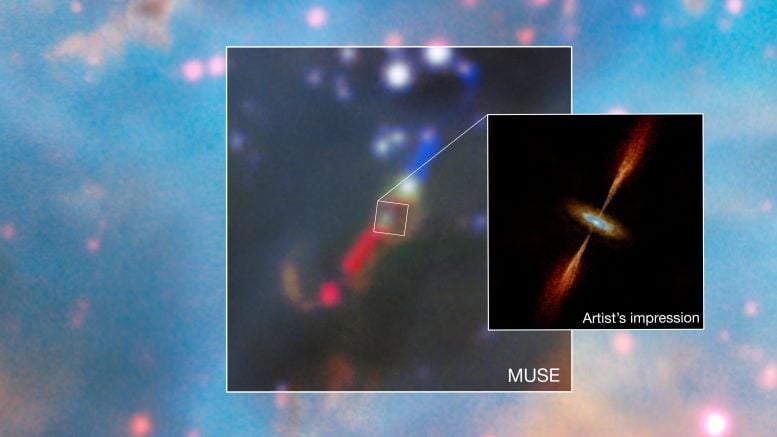
This mosaic shows, at its center, a real image of the young star system HH 1177, in the Large Magellanic Cloud, a galaxy neighboring the Milky Way. The image was obtained with the Multi Unit Spectroscopic Explorer (MUSE) on ESO’s Very Large Telescope (VLT) and shows jets being launched from the star. Researchers then used the Atacama Large Millimeter/submillimeter Array (ALMA), to find evidence for a disc surrounding the young star. An artist’s impression of the system, showcasing both the jets and the disc, is shown on the right panel. Credit: ESO/A. McLeod et al./M. Kornmesser
As matter is pulled towards a growing star, it cannot fall directly onto it; instead, it flattens into a spinning disc around the star. Closer to the center, the disc rotates faster, and this difference in speed is the smoking gun that shows astronomers an accretion disc is present.
“The frequency of light changes depending on how fast the gas emitting the light is moving towards or away from us,” explains Jonathan Henshaw, a research fellow at Liverpool John Moores University in the UK, and co-author of the study. “This is precisely the same phenomenon that occurs when the pitch of an ambulance siren changes as it passes you and the frequency of the sound goes from higher to lower.”
This artist’s animation shows the HH 1177 system, a young and massive stellar object located in the Large Magellanic Cloud, a neighboring galaxy to our own. Using the Atacama Large Millimeter/submillimeter Array (ALMA), a team of astronomers managed to catch sight of a disc in HH 1177 by observing its rotation, as animated in this artist’s impression. This is the first time astronomers have found a disc around a young star in another galaxy, the type of disc identical to those forming planets in our own galaxy. The star glowing in the center is collecting matter from a dusty disc while also expelling matter in powerful jets. Credit: ESO/M. Kornmesser
The detailed frequency measurements from ALMA allowed the authors to distinguish the characteristic spin of a disc, confirming the detection of the first disc around an extragalactic young star.
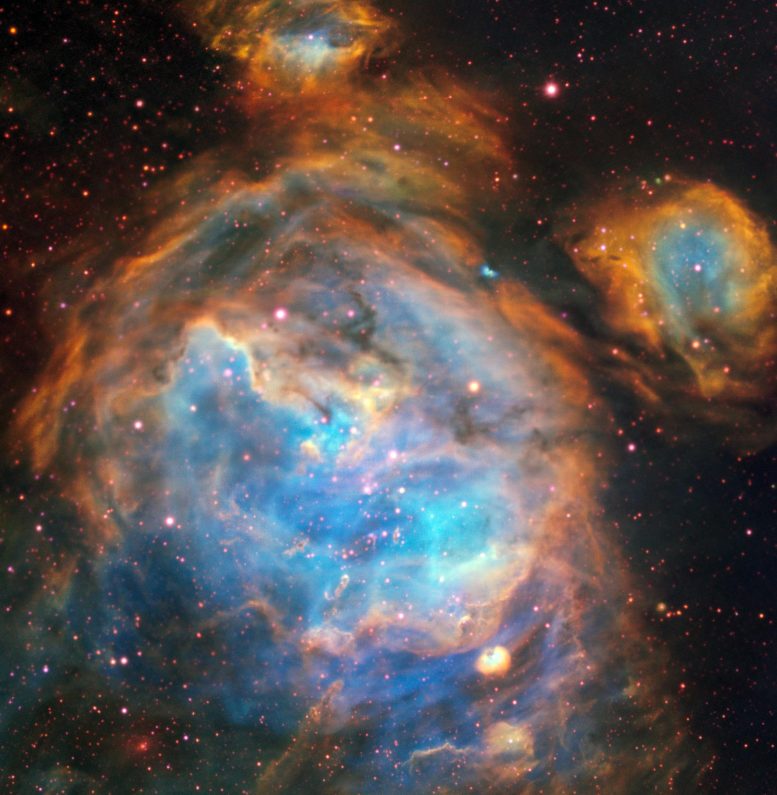
This dazzling region of newly-forming stars in the Large Magellanic Cloud (LMC) was captured by the Multi Unit Spectroscopic Explorer instrument on ESO’s Very Large Telescope. The relatively small amount of dust in the LMC and MUSE’s acute vision allowed intricate details of the region to be picked out in visible light. Credit: ESO, A McLeod et al.
Understanding Massive Star Formation
Massive stars, like the one observed here, form much more quickly and live far shorter lives than low-mass stars like our Sun. In our galaxy, these massive stars are notoriously challenging to observe and are often obscured from view by the dusty material from which they form at the time a disc is shaping around them. However, in the Large Magellanic Cloud, a galaxy 160,000 light-years away, the material from which new stars are being born is fundamentally different from that in the Milky Way. Thanks to the lower dust content, HH 1177 is no longer cloaked in its natal cocoon, offering astronomers an unobstructed, if far away, view of star and planet formation.
This video starts with a wide view of the Milky Way, zooming into the Large Magellanic Cloud 160,000 light-years away, all the way to the young star system HH 1177 within it. Credit: ESO
“We are in an era of rapid technological advancement when it comes to astronomical facilities,” McLeod says. “Being able to study how stars form at such incredible distances and in a different galaxy is very exciting.”
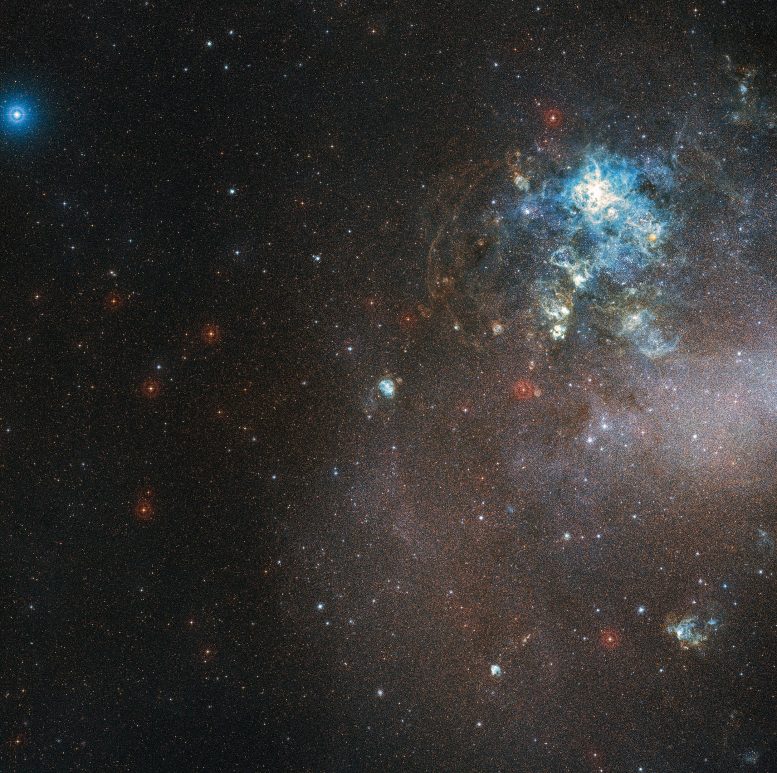
The image is a color composite made from exposures from the Digitized Sky Survey 2, and shows the region surrounding LHA 120-N 180B, visible at the center of the image. Credit: ESO/Digitized Sky Survey 2. Acknowledgment: Davide De Martin
Reference: “A probable Keplerian disk feeding an optically revealed massive young star” by Anna F. McLeod, Pamela D. Klaassen, Megan Reiter, Jonathan Henshaw, Rolf Kuiper and Adam Ginsburg, 29 November 2023, Nature.
DOI: 10.1038/s41586-023-06790-2
The disk was spotted within a region in the Large Magellanic Cloud known as LHA 120-N 180B.
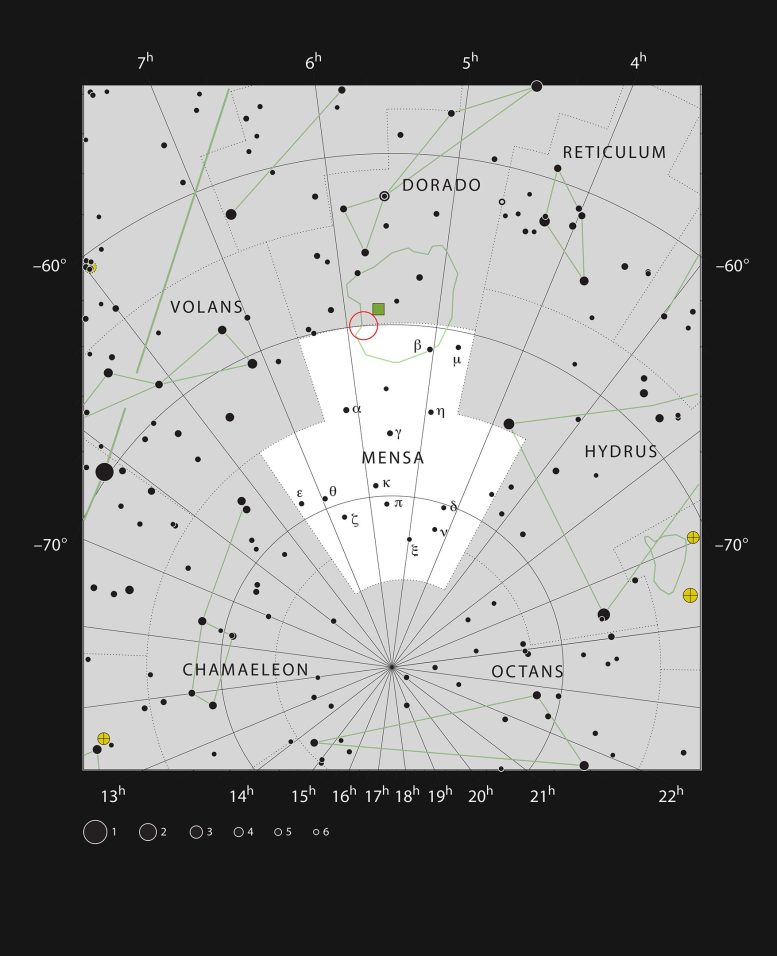
This chart shows the location of the HII region LHA 120-N 180B in the constellation of Mensa (The Table Mountain). Mensa is the only constellation named after a geographical feature on Earth — it was named after Table Mountain in South Africa’s Cape of Good Hope by French astronomer Nicolas-Louis de Lacaille. This map includes most of the stars visible to the unaided eye under good conditions, and the region of sky shown in this image is indicated. Credit: ESO, IAU and Sky & Telescope
The team is composed of A. F. McLeod (Centre for Extragalactic Astronomy, Department of Physics, Durham University, UK; Institute for Computational Cosmology, Department of Physics, University of Durham, UK), P. D. Klaassen (UK Astronomy Technology Centre, Royal Observatory Edinburgh, UK), M. Reiter (Department of Physics and Astronomy, Rice University, USA), J. Henshaw (Astrophysics Research Institute, Liverpool John Moores University, UK; Max Planck Institute for Astronomy, Germany), R. Kuiper (Faculty of Physics, University of Duisburg-Essen, Germany), and A. Ginsburg (Department of Astronomy, University of Florida, USA).



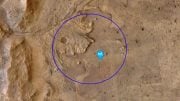





Be the first to comment on "A Cosmic First: Astronomers Uncover a Planet-Forming Disc in Another Galaxy"